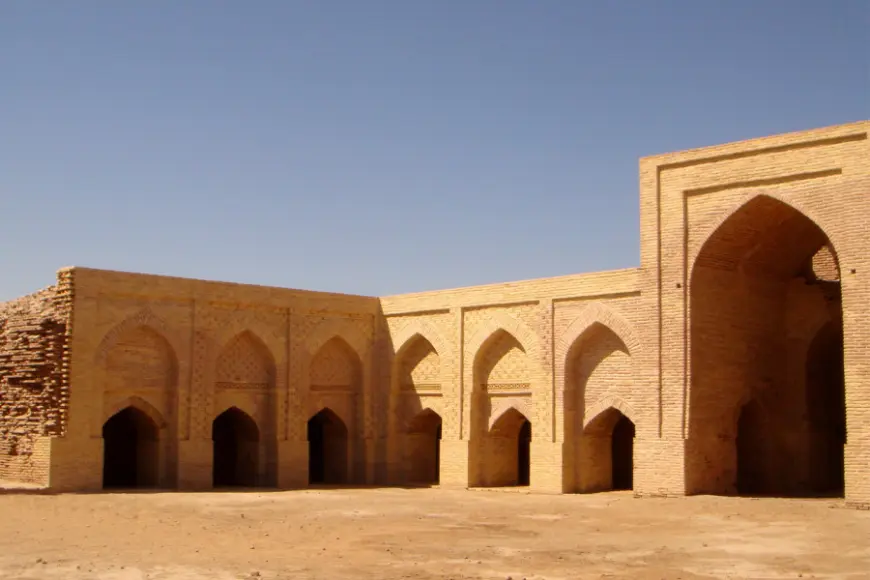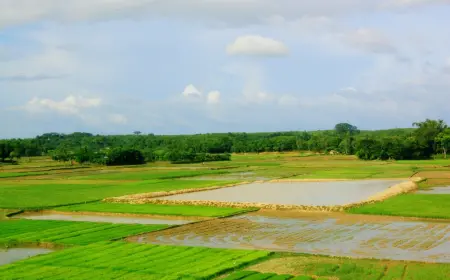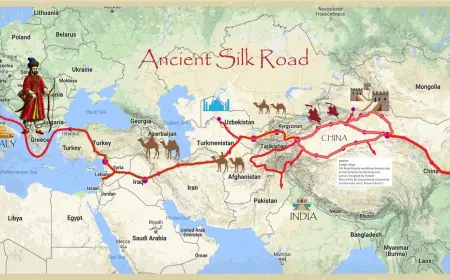Dayahatyn Caravanserai
Dayahatyn Caravanserai

Like many corners of our homeland, Turkmenistan, the territory of Lebap Velayat is rich with historical and architectural monuments that reflect centuries of cultural development and architectural mastery. Some of these sites have already been studied, while others still await exploration. Among the most distinguished of these is the Dayahatyn Caravanserai, located within the Gabakly village near the city of Seýdi.
The Dayahatyn Caravanserai stands as a brilliant example of architectural ingenuity from the 11th–12th centuries. The structure is surrounded by imposing walls made of adobe bricks, enclosing a rectangular rabat (fortified structure) that measures approximately 112 × 125 meters. This rabat dates back to the 9th century and was once known as Tahiriya (the Rabat of Tahir), named after Tahir ibn al-Husayn, as recorded by the renowned historian Yaqut.
Later, in the 11th–12th centuries, the caravanserai itself was constructed within this earlier fortification. This is evident from its stylistic features and the materials used during its construction.
One of the remarkable aspects of the structure is the combination of sun-dried mud brick for the walls and fired brick (measuring 28 × 28 × 5.5 cm) for the interior and exterior facing. This thoughtful technique capitalized on the low thermal conductivity of adobe, allowing the interiors to remain warm in winter and cool during summer — a testament to the practical brilliance of medieval Turkmen builders.
The caravanserai’s layout forms a perfect square with sides of 53 meters. Inside are 23 rooms of varying sizes, connected by roofed galleries. At the center lies a courtyard measuring approximately 30 × 30 meters, surrounded on all four sides by symmetrical arcades adorned with intricate brickwork.
The main portal — an architectural highlight — faces northeast toward the Amu Darya River, a strategic orientation that offered protection from the harsh desert winds while enhancing the monument’s grandeur. The domes, arches, and finely ornamented surfaces give the structure a stately elegance and architectural harmony.
The Legend of Bayhatyn
While the site is officially known as Dayahatyn, it is also referred to by locals as Bayhatyn, a name shrouded in folklore. The term “daya” has Arabic roots, meaning "cultivated land" or "settlement," while “hatyn” (in Pashto: woman or wife) is often interpreted as "lady" or "noblewoman." Thus, Bayhatyn is sometimes translated as "the Lady’s Caravanserai."
A beloved folk legend offers a poetic origin for this name:
A wealthy merchant had a beautiful and virtuous wife. During one of his long trade journeys, slanderous rumors began to circulate about her. Distraught upon hearing these lies, the merchant abandoned his home, wealth, and identity, disguising himself as a poor wanderer.
Refusing to believe the gossip, his devoted wife set out to find him. She declared across the land that she was building a caravanserai and needed workers. Among those who came seeking work was her long-lost husband. The truth was revealed, the couple reunited, and the structure became a symbol of loyalty and love — forever known as Baýhatyn, in honor of the noble woman who built it.
Throughout the Middle Ages, Dayahatyn played a vital role as a hub on the Great Silk Road, serving as a resting and trading post between Amul (modern-day Türkmenabat) and Khorezm. Caravans from across Central Asia would stop here to rest, trade, and resupply. The site remained active until the 16th century.
Information adapted from materials provided by the Atamyrat State Historical and Cultural Reserve.
















































